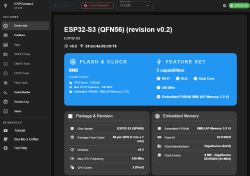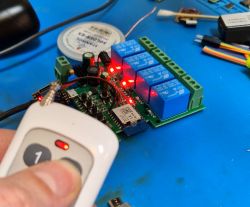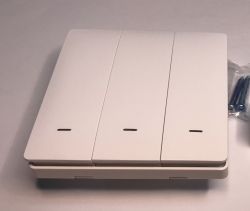Some time ago I purchased a Wemos ESP2866 module to use as a wireless controller for a WS2812b led strip.
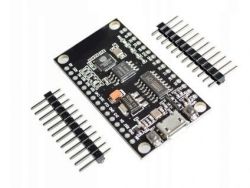 .
.
After soldering the goldpins I connected it to the computer. Smoke went up. I quickly unplugged the unit, but noticed no damage (apart from a stain near the orange capacitor). I changed the cable, reconnected it to the computer.
I managed to upload the WLED software. That is, by this point the board was relatively functional. I proceeded with the next part. I tried to connect to the WLED but was unable to, the board was going out. The hub has an auxiliary power supply, so I decided to switch to the charger from the phone. Connection diagram below inspired by what I found on the WLED website (https://github.com/Aircoookie/WLED/wiki)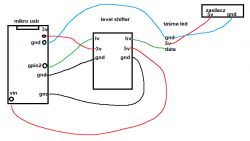
Shortly after connecting, the board died on the amen. Heavily heated, the miniusb port pulled out of the board when trying to disconnect. I am unable to verify if it is still bootable.
Photo of the damaged board

What went wrong? Is a manufacturing defect to blame? Or did I make a mistake later and "hit" the board when connecting to the power supply and led strip? If I did something wrong, I would like to avoid the same mistake in the future
 .
.
After soldering the goldpins I connected it to the computer. Smoke went up. I quickly unplugged the unit, but noticed no damage (apart from a stain near the orange capacitor). I changed the cable, reconnected it to the computer.
I managed to upload the WLED software. That is, by this point the board was relatively functional. I proceeded with the next part. I tried to connect to the WLED but was unable to, the board was going out. The hub has an auxiliary power supply, so I decided to switch to the charger from the phone. Connection diagram below inspired by what I found on the WLED website (https://github.com/Aircoookie/WLED/wiki)

Shortly after connecting, the board died on the amen. Heavily heated, the miniusb port pulled out of the board when trying to disconnect. I am unable to verify if it is still bootable.
Photo of the damaged board

What went wrong? Is a manufacturing defect to blame? Or did I make a mistake later and "hit" the board when connecting to the power supply and led strip? If I did something wrong, I would like to avoid the same mistake in the future




